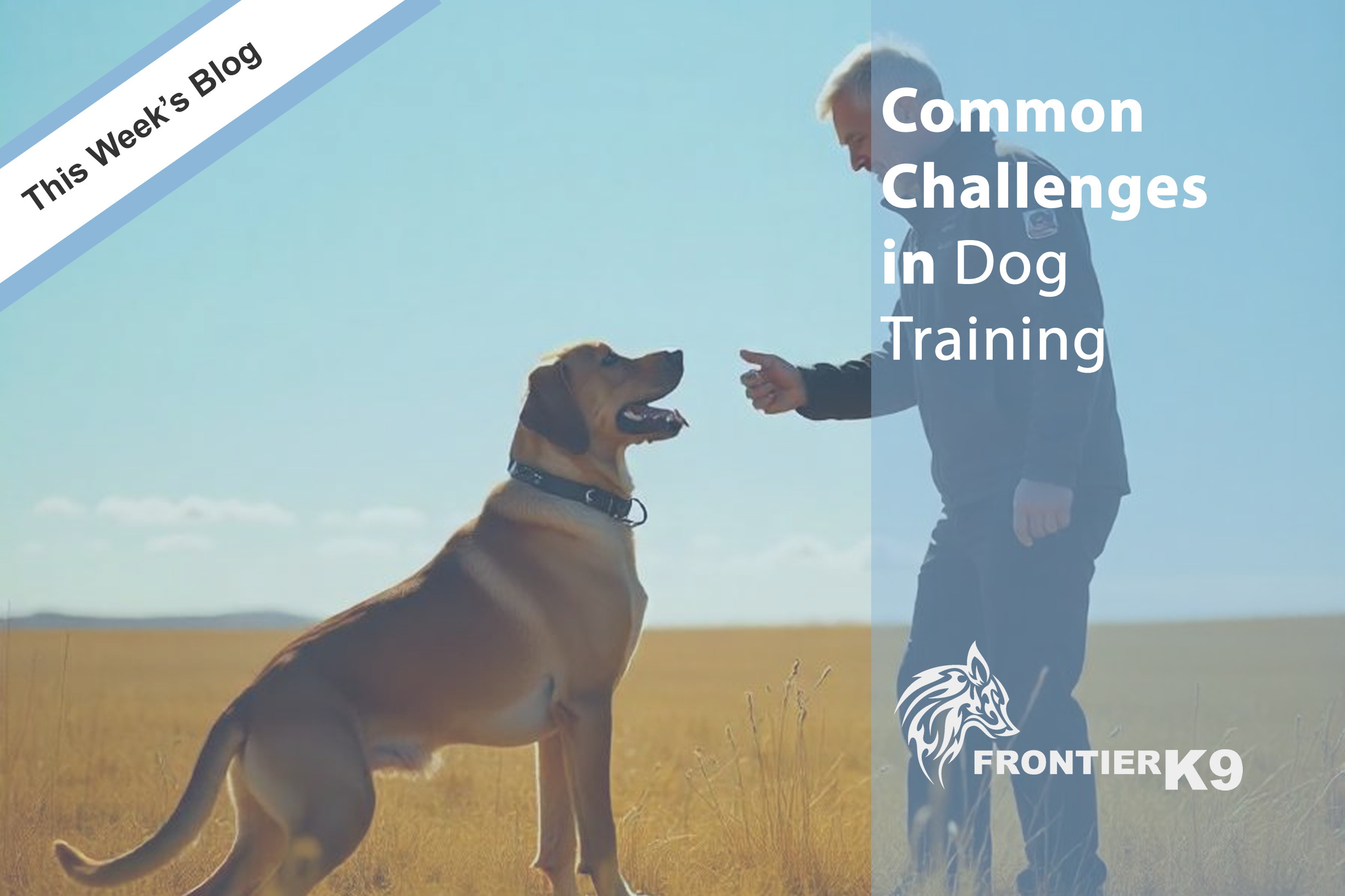Here at Frontier K9 Services, we know that training a dog is a rewarding experience, but it can also come with its fair share of challenges. Whether you’re working with a new puppy or an older rescue dog, understanding and overcoming these challenges can make the process more effective and enjoyable for both you and your canine companion. Here are some of the most common challenges in dog training and how to tackle them.
1. Lack of Consistency
One of the most common challenges in dog training is maintaining consistency. Dogs thrive on routine, and inconsistent training can lead to confusion and slower progress. To overcome this, establish clear rules and consistently enforce them. Whether it’s house training, commands, or behavioural expectations, being consistent helps dogs understand what’s expected of them.
- Solution: Create a consistent training schedule and ensure that all family members follow the same commands and rules.
2. Inconsistent Communication
Dogs rely on their owners for communication, and unclear signals can lead to misinterpretation. Commands need to be concise, and reinforcement should be positive to build trust. For instance, using varying tones or commands can confuse your dog.
- Solution: Use the same commands with a consistent tone of voice, paired with positive reinforcement, such as treats or praise, for successful execution.
3. Lack of Patience
Training a dog can take time, especially for dogs with behavioural challenges or particular needs. Frustration can set in if quick results aren’t achieved, but patience is key to progress.
- Solution: Break training into smaller, manageable steps and celebrate small successes. Patience and persistence go a long way in fostering a strong bond and progress.
4. Distracted Dogs
Distractions are a common hurdle in training sessions. Whether it’s other dogs, people, noises, or environments, dogs can struggle to focus during training when there are distractions.
- Solution: Start training in a quiet, controlled environment, gradually exposing your dog to more distractions over time. Use techniques like reward-based training and reward the dog for returning focus to the task.
5. Fear or Anxiety
Some dogs experience fear or anxiety around specific situations, people, or other animals. Training in these cases requires sensitivity and understanding. Rushing through training may make things worse.
- Solution: Use positive reinforcement and patience to help the dog build confidence. Counter-conditioning techniques, where you gradually expose the dog to the source of their fear, often work well in these situations.
6. Reinforcement Challenges
Finding the right reinforcement that motivates your dog can be tricky. Some dogs respond better to treats, while others are more driven by praise or toys.
- Solution: Experiment with different types of reinforcement to discover what works best for your dog. Ensure that the reinforcement is valuable to the dog and increases the likelihood of desired behavior.
7. Behavioural Regression
Dogs may regress in their training due to changes in their environment, health issues, or new stressors. This can be frustrating, especially when progress seemed solid.
- Solution: Address underlying health concerns and maintain a structured training routine. Consistent reinforcement and adjusting training methods can help get things back on track.
8. Boredom
Just like humans, dogs can get bored with repetitive training exercises, leading to reduced enthusiasm and slower learning.
- Solution: Incorporate variety into training sessions with different commands, games, and mental exercises to keep your dog engaged and stimulated.
Conclusion
Training a dog is a journey that requires understanding, patience, and adaptability. By recognising common challenges and implementing appropriate solutions, you can build a strong, trusting relationship with your furry friend and ensure effective communication and behaviours management. Whether it’s overcoming distractions, building trust, or refining reinforcement techniques, every step forward strengthens the bond between you and your dog.


